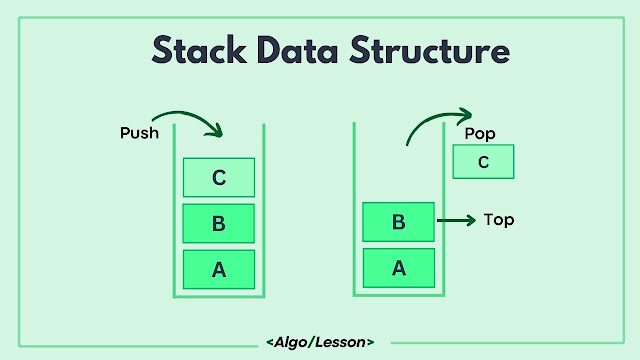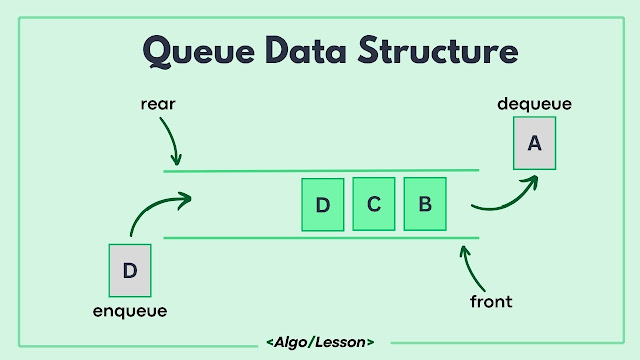Stack Data Structure.
A stack is a linear data structure that follows the Last In, First Out (LIFO) principle which means the insertion (push) and deletion (pop) happen only from one side of the stack which is the top. The last element pushed onto the stack is the first to be popped off. Let's understand stack data structure with one real-life example:
Example:
Consider a practical scenario: browsing the internet. Your browser's back button functionality perfectly illustrates how a stack operates. When you visit the web pages, each visited page becomes analogous to a plate added to a stack. The most recently visited page sits on top, while the older pages form a stack beneath it.
As you navigate through these pages, you often use the back button to revisit previously viewed pages. This action mimics the operation of a stack: when you press 'back' the last page (the most recent addition to the stack) gets popped off the stack and becomes the current page.
Queue Data Structure.
A Queue is a linear data structure that operates on the principle of First In, First Out (FIFO), which means the element that is inserted first in the queue will out first from the queue. Elements are added at the rear end (enqueue) and removed from the front (dequeue), making it efficient for scenarios where data needs to be processed in the order it was received. Let's understand the queue data structure with one real-life example:
Example:
Consider a printer queue handling multiple print jobs, as documents are sent for printing, they join the queue. The printer processes these documents in the order they arrive. Similarly, in programming, a queue is used to manage data based on their arrival sequence.
Difference Between Stack and Queue.
| Stacks | Queues |
|---|---|
| Stack is based on the Last In, First Out (LIFO) principle, elements that are inserted first will come out at last. | A Queue is based on the First In, First Out (FIFO) principle, elements that are inserted first in the queue will come out first. |
| In stack, the insertion operation is known as the "Push" operation. | A queue insertion operation is known as an "Enqueue" operation. |
| In stack deletion operation is known as "Pop" operation. | In queue deletion operation is known as "Dequeue" operation. |
| In stack, access to elements is limited to the top element (or the element at the end). | In a queue, access to elements is limited to the front element (or the element at the beginning) |
| In stack, data moves in and out from the same end. | In queue, data enters from the rear and exits from the front. |
| It can be implemented using arrays or linked lists. | It can be implemented using arrays or linked lists. |
| Example: Browser history, call stack in programming, backtracking algorithms. | Example: Print queue, task scheduling in operating systems, and breadth-first search algorithms. |
Similarities of Stack and Queue Data Structure.
Although stack and queue are completely two different data structures still they share a few similarities:
- Both stacks and queues are linear data structures where elements are stored in a sequential manner.
- They support common operations like isEmpty to check if the structure is empty, size to determine the number of elements, and peek to view the top/front element without removing it.
- Both structures can be implemented using arrays or linked lists to manage and organize their elements.












No comments
Post a Comment